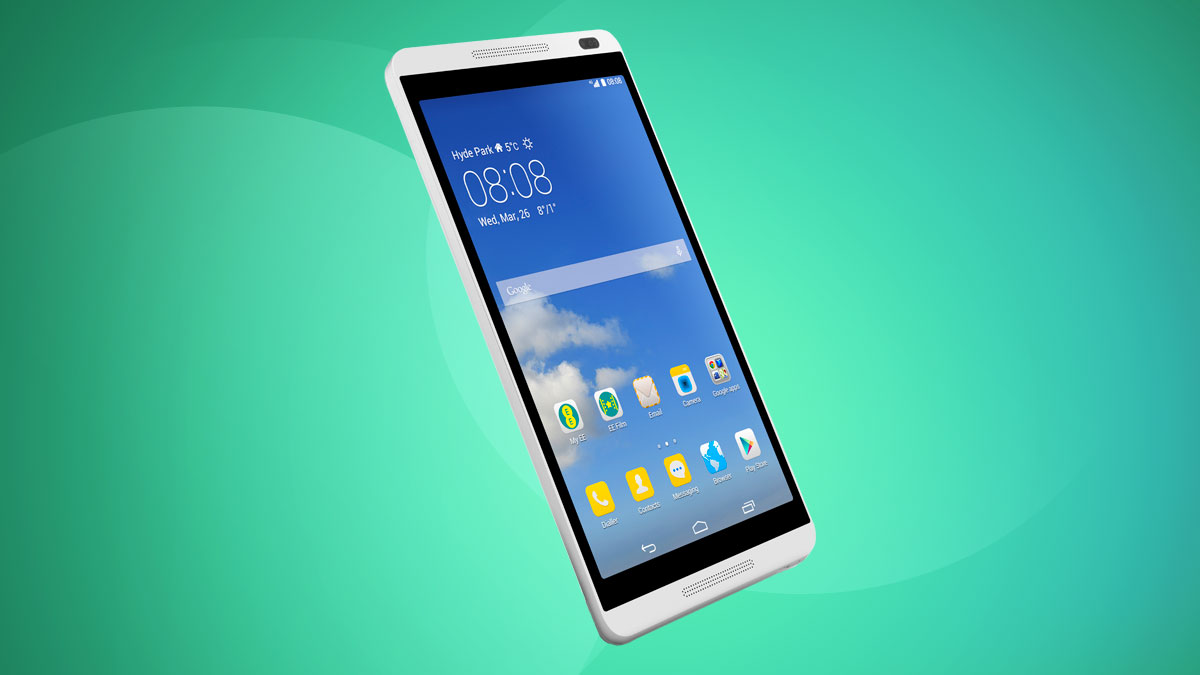Early Verdict
If you're desperate for a low-cost 4G tablet the Eagle will be a decent shout, but there are better £200 slates out there without the 4G connection.
Pros
- +
Affordable 4G tablet
- +
Solid design
- +
Front and rear cameras
Cons
- -
Childish interface
- -
Older Android
- -
Average display
Why you can trust TechRadar
The EE Eagle is a tablet that you've already seen. For those of you with a good memory you'll instantly recognise it as the Huawei MediaPad M1.
There's no hiding the fact that the 4G-enabled Eagle is basically a carbon copy of Huawei's 8-inch slate which EE is hoping can tempt people away from the iPad mini.
It gets off to a good start with a PAYG price of £199.99, making the Eagle from EE considerably cheaper than the Wi-Fi + 4G iPad mini, which will set you back £349.
If you'd rather not part with £200 up front you can reduce your initial outlay to £49.99 if you sign up to a two year, £15 per month contract which gives you 2GB of data.
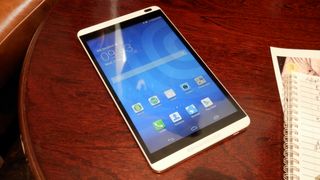
I managed to get some brief hands on time with a pre-production model of the EE Eagle, although I was told that it wasn't final hardware or software.
It won't be far off though as the EE Eagle release date has been set for May 28, so if this 4G tablet takes your fancy you won't have to wait long.
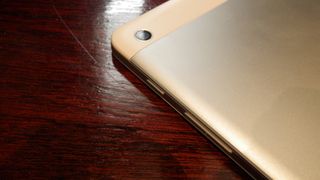
You'll find an 8-inch screen and dual-speakers on the front and a 5MP snapper on the rear, while under the hood the Eagle comes with a 1.6GHz quad-core processor, 1GB of RAM, 16GB internal storage and CAT 4 LTE support allowing you to take advantage of EE's double speed network.
Currently double speed is only available in some areas of London, but EE claims it will have rolled out the faster network to 40 towns and cities by the end of 2014.
Unfortunately the EE Eagle comes running Android 4.2.2 Jelly Bean, a rather old version of Google's platform, and the network was unable to confirm anything on a potential KitKat upgrade.
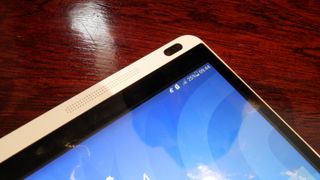
As with the MediaPad M1, I can't help but make similarities to the HTC One when it comes to the design of the EE Eagle.
The familiar looking, front-facing speaker grilles are laid out in the same fashion as the Taiwanese smartphone, while round the back the metal-effect plastic rear with white bumpers above and below makes for a striking resemblance to the LG G Pad 8.3.
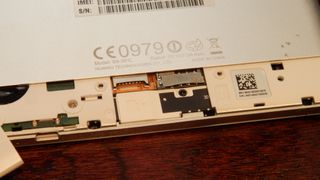
The plastic strip on the base can be peeled off to reveal the microSIM and microSD ports, allowing you to gain easy access to them. This does mean you can't get to the battery inside the Eagle though.
Huawei hasn't gone big on looking for unique design then, but to the Eagle's credit the body is solid and it feels like it could take a couple of bumps.
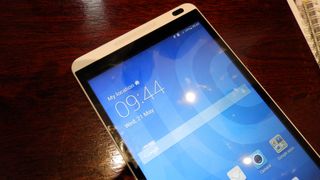
The EE Eagle doesn't feel overly premium - where the G Pad 8.3 and iPad mini have metal bodies this tablet is completely plastic. That's hardly a surprise considering the price, but it's not that heavy and I was able to hold it relatively comfortably in one hand.
The screen on the EE Eagle is acceptable at 800 x 1280, and it is on a par with the original iPad Mini, but it doesn't come close to the iPad Mini 2 or G Pad in terms of detail or brightness, with colours appearing washed out.
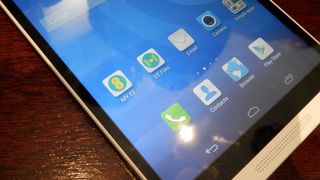
I also found the Eagle was a little sluggish as I moved around, opened and closed apps and fired up multi-tasking, but as I've already mentioned it wasn't running final software so things may improve.
EE has stuck with Huawei's Emoition UI on the Eagle too, which sees the traditional Android app tray disappear in favour of housing all your applications on homescreens.
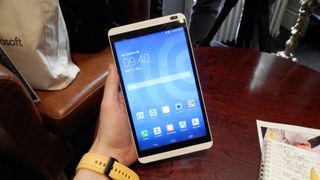
This is a simpler approach from those who are new Android, but experienced users may find the layout a little frustrating and the childish style of the icons makes the Eagle look like a toy.
Of course the Eagle also come with EE's own applications pre-installed, although they don't really get in the way and they are actually pretty useful.
There's no flash to accompany the 5MP rear facing camera, but you do get a front facing snapper which I assume is the same 1MP offering you get on the MediaPad M1, but EE was unable to confirm that.
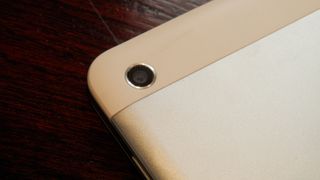
Early verdict
If you're desperate for a 4G-enabled tablet, but don't have a huge amount to spend, the EE Eagle is a solid choice.
That said, if you're not fussed about a web connection on the go then the Wi-Fi-only LG G Pad 8.3 is the same price and boasts a far better screen, more power and the latest version of Android.

John joined TechRadar over a decade ago as Staff Writer for Phones, and over the years has built up a vast knowledge of the tech industry. He's interviewed CEOs from some of the world's biggest tech firms, visited their HQs and has appeared on live TV and radio, including Sky News, BBC News, BBC World News, Al Jazeera, LBC and BBC Radio 4. Originally specializing in phones, tablets and wearables, John is now TechRadar's resident automotive expert, reviewing the latest and greatest EVs and PHEVs on the market. John also looks after the day-to-day running of the site.
What is a hands on review?
Hands on reviews' are a journalist's first impressions of a piece of kit based on spending some time with it. It may be just a few moments, or a few hours. The important thing is we have been able to play with it ourselves and can give you some sense of what it's like to use, even if it's only an embryonic view. For more information, see TechRadar's Reviews Guarantee.

Google's AI-powered bug hunting tool finds a host of concerning open source security flaws

Apple just confirmed its annual Black Friday shopping event, and it's all about gift cards

Would you pay $2000 for the most extravagant laptop of 2024? GPD's double foldable convertible laptop goes on sale — with world's fastest mobile CPU and even an OCuLink connector
